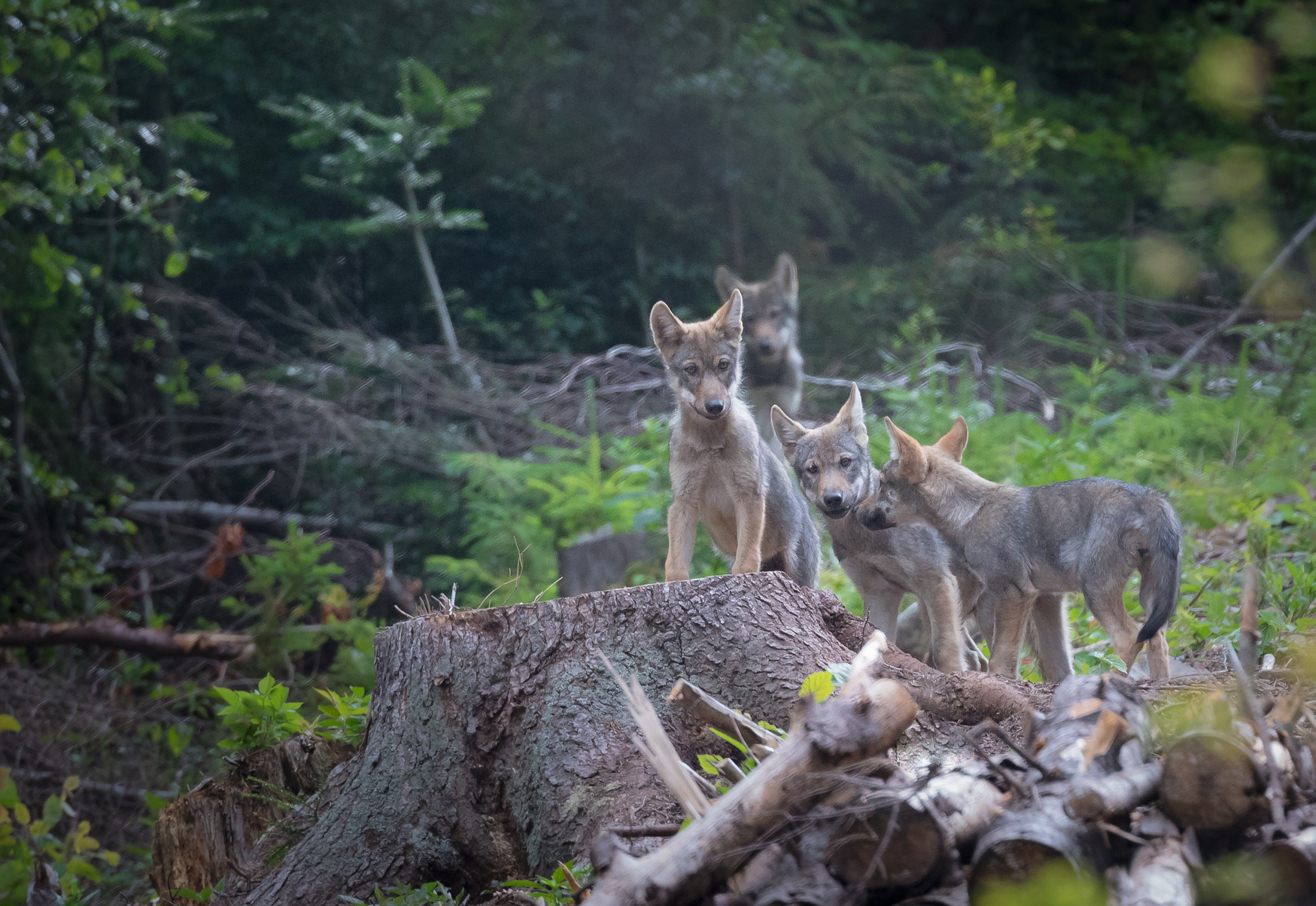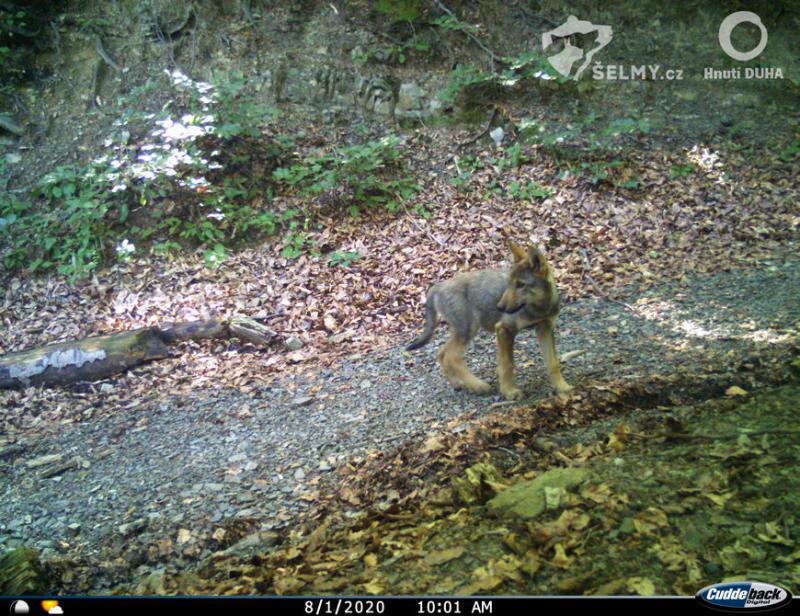ConnectGREEN - New arrivals: wolf cubs in Slovakia
30-10-2020
At the Slovak - Czech border, conservationists celebrate the presence of the first wolf cubs. A success story made possible by the remaining migration corridors.
'Wolves began to return to the Czech Republic in the 1990s, first to the Carpathian Mountains on the border with Poland and Slovakia. Initially, they were individuals, but now, after more than 20 years, it is a wolf family with cubs,' says Michal Bojda from Hnutí DUHA, which monitors large carnivores.
For the wolf pack in Sliezke Beskydy, this is the first time they have cubs. For the pack in the Czech part of Javorníky, this marks the second time. Why now? According to Bojda, this reflects the current situation wolves experience in Slovakia. Until 2009, the wolves were hunted in the country without any quotas. When quotas were finally introduced, they were very high. The number of reported wolves hunted was around 150 per year. But in 2013 hunting along state borders and within NATURA 2000 areas was banned and the obligation to have each hunted wolf controlled by state conservationists was introduced. Despite a quota of 80 wolves, hunters reported only 27 wolves shot during that season.
'When hundreds of wolves were hunted in Slovakia, wolf families did not have a chance to migrate and spread to our territory,' says Bojda. And even today the situation is not ideal. The areas declared for the protection of the wolves are small compared to the areas where the wolf packs normally move. The ‘Bohemia-Slovak’ cross-border pack is also protected around its den on the ridge of the Javorníky, but when it moves further down into the valleys, its members can be hunted. The pack in Sliezke Beskydy, which migrates through three countries - Poland, Slovakia and the Czech Republic, faces a similar threat. 'We are afraid that one or both parents may be hunted, because in that situation the remaining cubs may focus on easier prey, such as insufficiently protected sheep,' says Bojda.

Young wolves in Javorníky. Photo: Peter Drengubiak, PLA Kysuce
The return of wolves into the Czech Republic is possible thanks to the latest migration routes between mountainous areas on the borders. Especially in Kysuce their protection is essential. The last migration routes which remain here are the only routes through which the large carnivores can move from Slovakia to the Czech Republic, especially the wolf and the lynx.'The number of bears is growing in Slovakia, but we do not see them in the Czech republic. We think that this is precisely the consequence of the deteriorating permeability of the country,' says Bojda.
Peter Drengubiak from the Kysuce Protected Landscape Area (PLA) Administration also draws attention to this problem. The PLA Kysuce is divided by roads, railways and intensive development into small fragments of natural land that are suitable for large carnivores.
PLA Kysuce is located on the western edge of the Carpathians and is essential to maintaining connectivity between Slovakia, Czech Republic and Poland. 'The most important eco-corridor Skalité - Svrčinovec enabling the movement of large carnivores to the Czech Republic, Poland and back passes through two collision points with transport infrastructure. In Skalité, the movement of animals is possible under the viaduct of the D3 motorway; in Svrčinovec, the ecoduct is planned to ensure the movement of animals,' says Drengubiak.

Cub on a photo trap in the Sliezke Beskydy. Photo: Jiří Labuda, Hnutí Duha
For migration within Kysuce and Javorníky in Slovakia, in the urbanized valleys of the Kysuca and Bystrica rivers, the last corridors remain near cities and villages: Čadca, Horelica, Kysucký Lieskovec, Povina, Rudinka a Klubina. However, these corridors, monitored within the TransGREEN and the ConnectGREEN projects, intersect roads or even railways, and their continued permeability is threatened by the growth of urban areas and the erection of fences. 'It is almost impossible to prevent construction activities in eco-corridors which are outside the strictly protected areas. Does Slovakia not realise that not only the protected areas in which large carnivores occurr are important for their protection, but also the ‘connections’ – eco-corridors between them, which ensure irreplaceable gene movement?', Drengubiak asks.
PLA Kysuce borders the national park Mala Fatra, but even the migration between those two protected areas is difficult. It is necessary to protect the last corridors near the village of Stráža, then between Bela and Terchová and close to Rovná Hora. It was in the environs of the village of Stráža where one of the 35 wolves hunted last year within the permitted quota, was shot. The second wolf shot in this region was hunted closer to the Czech border - near the village Dlhé pole and, according to reports, was a member of a 6-member pack.
In the Kysuce PLA itself, on the Slovak side, monitoring confirmed two wolf packs with cubs in Javorníky and three in Kysucká vrchovina. Most packs were small – with three members, only one was composed of six individuals. They also recorded several lonely wolves.
Wolves are not hunted in the Czech Republic and in Poland. In Poland, they were previously almost hunted to extinction and only remained in the eastern part of the country. Once the hunting stopped, they began to spread to the west once more.
The Slovak Ministry of Agriculture has just announced at the end of October that wolf hunting will be allowed this season, too. From November 2020 to mid-January 2021, 50 wolves can be legally hunted in Slovakia. Since 2000, hunters in Slovakia have legally killed almost 1,800 wolves.
